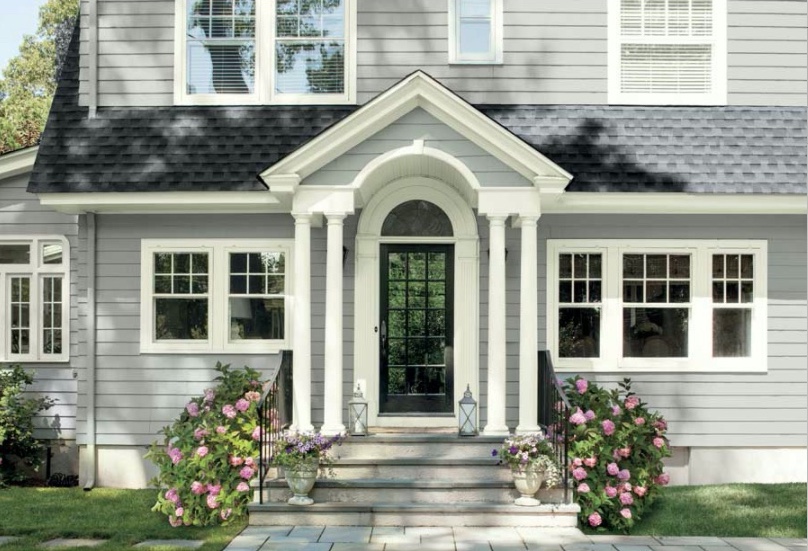
It is estimated that nearly 90% of all exterior paint failures are a result of inadequate surface preparation. We cannot stress enough the importance of good surface preparation.
Follow these steps to a great looking home
Step one – The surface must be clean and free of all dust, dirt, chalk, grease, oil, mold, mildew, wax, efflorescence, and loose or peeling paint. If a surface is in relatively good condition and has only a minor accumulation of dirt or chalk, it can be removed by hand washing or scrubbing with a TSP solution and then thoroughly rinsed with clear water. Small areas of loose or peeling paint can be sanded or wire brushed. If there is a heavier accumulation of dirt, chalk, or other substances or if there is a lot of peeling paint then you should recommend the use of a power washer along with one of the appropriate cleaners from Great Lakes.
Mold or mildew typically appears as small black or brown spots and many times is mistaken for dirt. If you’re uncertain, a simple test can be done by applying a small amount of household bleach to the spots and then rinsed. If the dark spots disappear where the bleach was applied then it is most likely mold or mildew, as bleach won’t remove just dirt. If mold or mildew is found to be present then it must be cleaned with a solution of one part bleach and 3 parts water, or a solution of Jomax Cleaner also works great. The bleach and water process should be done before a general cleaning of the siding. Once cleaned the surface needs to dry thoroughly. If a power washer was used this typically means 2-3 days of good drying weather. If washed by hand and rinsed with a garden hose 1-2 days is generally enough. When in doubt the use of a moisture meter is recommended.
Step 2 – Inspect for any needed repairs. Rotting or damaged wood should be replaced. Cracks, gaps, and holes should be repaired with the appropriate exterior spackle, putty, or paintable acrylic caulk. Remember paint won’t stick to pure 100% silicone caulk. If any loose or peeling paint was removed then the edges of the remaining paint should be feather sanded to help produce a smoother transition from the bare area to the older finish. Glossy surfaces should be lightly sanded to produce a dull finish with a slight profile for the new paint to adhere to. Bare wood should be primed with either Hirshfield’s Acrylic Primer (88-4250) or Hirshfield’s Oil Based Primer (88-6050). Platinum Exterior can be used as its own primer.
If all the proper steps are taken you should enjoy a beautifully painted exterior for many years to come.
The knowledgeable staff at any of our Hirshfield’s locations can answer questions you may have about surface preparation.
This Friday Find is brought to you by Kevin Larson, Product Manager at Hirshfield’s Paint Manufacturing.
Paint colors:
Body: Coventry Gray HC-169
Trim: Cloud Cover OC-25
Accent: Jet Black 2120-10
